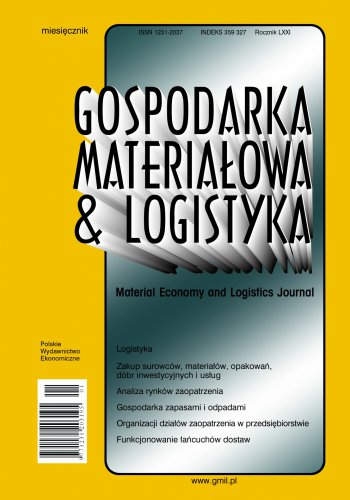Kooperacyjne Inteligentne Systemy Transportowe (C-ITS) jako rozwiązania podnoszące bezpieczeństwo i efektywność transportu drogowego
W artykule opisano rozwiązania z zakresu C-ITS, które były uwzględnione w analizach przeprowadzonych dla potrzeb projektu RID 4D, pt. „Wpływ stosowania usług Inteligentnych Systemów Transportowych na poziom bezpieczeństwa ruchu drogowego”, zrealizowanego na zlecenie Generalnej Dyrekcji Dróg Krajowych i Autostrad oraz Narodowego Centrum Badań i Rozwoju (umowa nr DZP/RID-I41/7/NCBR/2016).
Rozwiązania z zakresu C-ITS stanowią kolejny etap rozwoju Inteligentnych Systemów Transportowych. Dane z tych systemów mogą być wykorzystywane w ramach tzw. lokalnych map dynamicznych, które stanowią narzędzie łączące statyczne informacje o drogach, infrastrukturze drogowej i przydrożnej, z dynamiczną informacją drogową. Zakres danych dynamicznych obejmuje przesyłane do pojazdów informacje m. in. o incydentach drogowych czy awaryjnym hamowaniu, a ich wykorzystanie może się przyczynić do wzrostu bezpieczeństwa drogowego. Ponadto zwiększenie liczby dostępnych danych umożliwi precyzyjniejsze reagowanie na zagrożenia przez systemy wspomagania kierowcy w sytuacjach awaryjnych, w tym przez systemy stosowane w pojazdach autonomicznych.
W artykule opisano również możliwość wsparcia rozwoju elektromobilności przez rozwiązania z zakresu ITS, głównie dzięki sprawniejszemu informowaniu kierowców o możliwości ładowania akumulatora trakcyjnego samochodu i zastosowaniu inteligentnych plenerów podróży, uwzględniających poziom naładowania akumulatora, ale również rozmieszczenie i dostępność punktów ładowania.
Bibliografia
Bibliografia/References
Abunei, A., Comsa, C., Bogdan, I. (2017). Implementation of ETSI ITS-G5 based inter-vehicle communication embedded system, International Symposium on Signals, Circuits and Systems (ISSCS).
Aramrattana, M., Andersson, A., Reichenberg, F., Mellegard, N., Burden, H. (2019). Testing cooperative intelligent transport systems in distributed simulators, Transportation Research Part F: Traffic Psychology and Behaviour, 65, s. 206–216.
Aramrattana, M., Larsson, T., Jansson, J., Nabo, A. (2019). A simulation framework for cooperative intelligent transport systems testing and evaluation, Transportation Research Part F: Traffic Psychology and Behaviour, 61, s. 268–280.
Bechler, M., Kosch, T., Schroth, Ch., Strassberger, M. (2012). Automotive Internetworking, John Wiley & Sons, s. 38–40.
Dar, K., Bakhouya, M., Gaber, J., Wack, M., Lorenz P. (2010). Wireless communication technologies for ITS applications [Topics in Automotive Networking], IEEE Communications Magazine, 48 (5), p. 156–162.
Ehlers, U. Ch., Ryeng, E. O., McCormack, E., Khan, F., Ehlers S. (2017). Assessing the safety effects of cooperative intelligent transport systems: A bowtie analysis approach, Accident Analysis & Prevention, 99, Part A, s. 125–141.
Ibanez-Guzman, J., Lefevre, S., Mokkadem, A. and Rodhaim, S. (2010). Vehicle to Vehicle Communications Applied to Road Intersection Safety, Field Results. 13th International IEEE Conference on Intelligent Transportation Systems (ITSC), Funchal, 19–22.09.2010, s. 192–197. http://dx.doi.org/10.1109/ITSC.2010.5625246.
Intelligent Transport Systems (ITS). Communications Architecture, European Standard — ETSI EN 302 665 V1.1.1 (2010–09).
Javeda, M. A., Zeadally, S., Hamida, E. B. (2019). Data analytics for Cooperative Intelligent Transport Systems, Vehicular Communications, 15, s. 63–72.
Malasek, J. (2017). C-ITS — skoordynowany transport w inteligentnym mieście, Transport Miejski i Regionalny, 8, s. 11–17.
Netten, B., Wedemeijer, H. (2010). Testing Cooperative Systems with the Mars Simulator, 13th International IEEE Conference on Intelligent Transportation Systems (ITSC), Funchal, 19–22.09.2010, s. 186–191.
Oskarbski, J., Mowiński, K., Żarski, K. (2017), State of development of intelligent transport systems services on national roads in Poland, Archives of Transport System Telematics, 10 (4), s. 21–27.
Oskarbski, J., Zawisza, M., Żarski, K., Jamroz, K. (2018). Possible directions for development of C-ITS services in cities on the example of the TRISTAR System, Archives of Transport System Telematics, 11 (3), s. 35–42.
SAFESPOT Integrated Project (2012), http://www.safespot-eu.org/.
Schendzielorz, T., Vreeswijk, J., Mathias, P. (2009). Intelligent Cooperative Intersection Safety Implementation, Test and Evaluation. Proceedings of the 16th ITS World Congress.
Shimada, H., Yamaguchi, A., Takada, H., Sato, K. (2015). Implementation and Evaluation of Local Dynamic Map in Safety Driving Systems, Journal of Transportation Technologies, 5, s. 102–112.
Sun, L., Li, Y., Gao, J. (2016). Architecture and Application Research of Cooperative Intelligent Transport Systems, Procedia Engineering, 137, s. 747–753.
Zemranea, H., Baddi, Y., Hasbi, A. (2019). Mobile AdHoc networks for Intelligent Transportation System: Comparative Analysis of the Routing protocols, Procedia Computer Science, 160, s. 758–765.
Zott, C., Yuen, S. Y., Brown, C. L., Bartels, C., Papp, Z. and Netten, B. D. (2008). Safespot Local Dynamic Maps — Context-Dependent View Generation of a Platform’s State & Environment. Proceedings of the 15th ITS World Congress.

